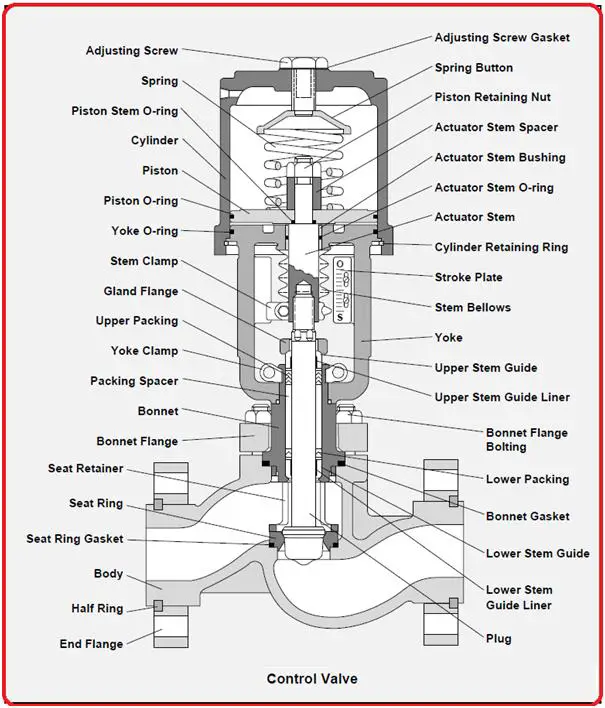
Maximize Power Savings and Comfort With Advanced Structure Automation Controls
In the realm of modern-day architecture and center monitoring, the assimilation of advanced building automation controls stands as a crucial innovation. By utilizing the power of automation, buildings can adjust, react, and advance in methods that were when unbelievable.
Power Efficiency Conveniences
Power efficiency benefits can significantly minimize energy intake and operational costs in structures. By applying energy-efficient techniques and technologies, structure owners and operators can achieve substantial savings while likewise adding to ecological sustainability. Among the main advantages of improving power efficiency in structures is the reduction of energy costs. Energy-efficient systems, such as advanced building automation controls, can optimize using sources like lights, home heating, and air conditioning, bring about reduced energy costs gradually.
Moreover, improved power performance can lengthen the life expectancy of building devices and systems. By operating extra efficiently, a/c systems, light, and other building elements experience less damage, leading to decreased upkeep and replacement costs. Furthermore, energy-efficient structures frequently command greater residential or commercial property values and rental rates, offering lasting economic benefits to owners.
Moreover, energy performance can boost passenger convenience and performance. Appropriately controlled interior environments with ideal illumination and thermal conditions produce an even more favorable and enjoyable work area, resulting in improved staff member satisfaction and efficiency. Overall, the energy efficiency advantages connected with sophisticated building automation controls are diverse, incorporating cost savings, environmental stewardship, and owner wellness.
Enhanced Convenience Control
Enhancing comfort control in structure environments calls for a sophisticated integration of sophisticated automation systems for ideal passenger well-being. By using innovative building automation controls, facilities can tailor the indoor atmosphere to satisfy the certain requirements and preferences of passengers. These systems allow specific policy of lights, temperature level, and air flow, creating a comfortable and efficient atmosphere. Resident contentment and performance are very closely connected to thermal convenience, making it vital to have systems in position that can adapt to changing problems in real-time.
Improved comfort control surpasses basic temperature level modifications. It includes attributes such as customized settings, tenancy sensors, and all-natural light usage to produce a dynamic and receptive atmosphere. By integrating these advanced controls, structures can not just enhance convenience however likewise improve power effectiveness by optimizing system procedures based upon actual tenancy and usage patterns. Inevitably, prioritizing resident comfort via sophisticated automation systems causes a more pleasurable and healthier indoor atmosphere.
Functional Effectiveness Improvements

Moreover, the application of real-time surveillance and analytics tools allows structure operators to determine power inefficiencies and operational abnormalities without delay. By continuously checking energy use patterns and system performance metrics, adjustments can be made in real-time to optimize energy intake and guarantee peak functional performance. control valves. Additionally, integrating need response approaches into building automation controls can additionally boost operational efficiency by dynamically changing energy use based upon grid problems and pricing signals
Indoor Climate Optimization
Reliable interior environment optimization is a basic aspect of building automation controls, ensuring residents' comfort and wellness while making best use of power cost savings. By making use of advanced sensors and controls, building automation systems can continuously change and keep an eye on temperature level, moisture degrees, air high quality, and air flow to develop an optimum interior atmosphere. Preserving constant and comfy problems not just improves resident satisfaction but also boosts performance and total health.
Interior environment optimization likewise plays a crucial role in power efficiency. By fine-tuning heating, cooling, and ventilation systems based upon real-time information and occupancy patterns, constructing automation controls can significantly reduce power usage - control valves. Implementing approaches such as demand-controlled ventilation and thermal zoning can help minimize power waste while guaranteeing that each location of the building receives the necessary conditioning.

Lasting Setting Production
Structure automation manages not only enhance indoor climate problems for power effectiveness and resident comfort yet additionally lay the structure for producing a sustainable environment through tactical administration of systems and resources. By integrating innovative structure automation technologies, such as sensing units, actuators, and intelligent software application, facilities can readjust and check energy use in real-time to lessen waste and decrease their carbon footprint. These systems make it possible for anticipating upkeep, determining potential concerns prior to they escalate and maximizing tools efficiency to improve longevity and performance.
Additionally, sustainable atmosphere creation expands here beyond power administration to encompass water preservation, waste decrease, and indoor air quality renovation. Building automation controls can manage water usage, spot leakages, and guarantee proper garbage disposal methods, adding to overall sustainability initiatives. Additionally, by checking and managing air flow and filtering systems, these modern technologies improve owner health and efficiency while decreasing energy intake connected with a/c operations.
Verdict
To conclude, progressed structure automation controls offer considerable benefits in terms of power financial savings, comfort control, operational effectiveness, interior climate optimization, and developing a lasting environment. By carrying out these controls, structures can attain ideal efficiency while reducing energy usage and boosting occupant comfort. It appears that making use of sophisticated automation innovation is crucial in enhancing building efficiency and developing a more sustainable future.
Energy efficiency benefits can considerably reduce energy consumption and operational costs in buildings. In general, the energy effectiveness advantages connected with sophisticated building automation controls are diverse, including price savings, environmental stewardship, and owner health.
Additionally, incorporating need feedback methods into structure automation controls can better boost functional effectiveness by dynamically adjusting power usage based on grid problems and prices signals.
Building automation controls not just enhance indoor environment conditions for power effectiveness and occupant convenience yet also lay the structure for developing a sustainable atmosphere via tactical monitoring of Your Domain Name sources and systems.In conclusion, progressed building automation manages offer considerable benefits in terms of energy cost savings, comfort control, functional efficiency, indoor environment optimization, and producing a sustainable setting.